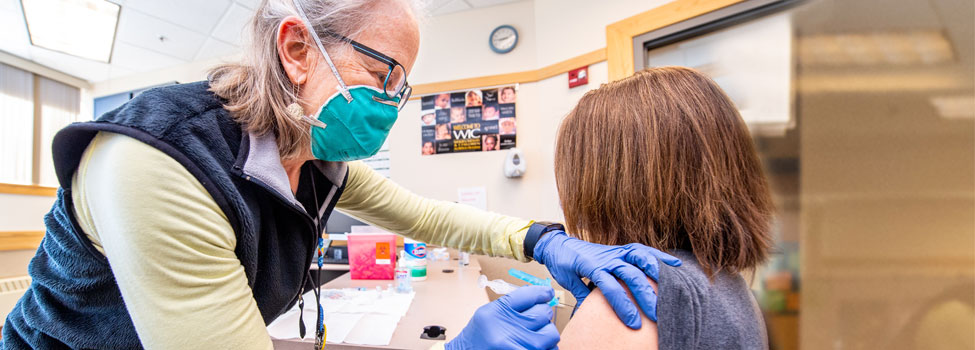Article
OSHA: Respiratory Protection and Airborne Infection

The risks of occupational exposure to influenza, COVID-19 and other airborne infectious agents by employees during a large outbreak vary greatly. Exposure depends in part on whether their jobs require close proximity to people potentially infected with a virus, or whether they are required to have either repeated or extended contact with known or suspected sources of a virus, such as co-workers, the general public, outpatients, children or other such individuals or groups. Job duties of public health, jail and health care employees can make them especially susceptible to viral exposures.
Vaccinations, frequent hand washing, physical barriers between people and favorable sick time policies are some of the techniques used to prevent the spread of illness in the workplace. In some situations, protecting employees from breathing in airborne viruses by using a respirator may be appropriate or merely desired by an employee.
Simply issuing respirators to employees or allowing them to wear their own is not an option and is a violation of Occupational Safety and Health Administration (OSHA) standards. An improperly selected or poorly fitted respirator would give both a limited and false sense of protection. In addition issuing a respirator to someone who is medically unqualified to wear one could be harmful to the individual’s health.
Risk Assessment
Employers should conduct a risk assessment of the workplace to determine whether respiratory protection is needed. Assistance in making this assessment can be found in the following publications:
- OSHA 3327 Guidance on Preparing Workplaces for an Influenza Pandemic
- OSHA 3328 Pandemic Influenza Preparedness and Response Guidance for Health Care Workers and Health Care Employers
Both are available on OSHA’s Pandemic Influenza page at OSHA.gov/SLTC/pandemicinfluenza/index.html.
Guidance is also available at:
Did you Know?
A respirator is significantly different from a single strap dust/pollen mask or surgical mask. These masks are not designed to create a tight seal against the user’s face and should not be relied on to protect against airborne infectious agents. When respirators, such as the N95 filtering face piece, are used in the workplace, specific OSHA standards must be met.
Respiratory Protection Program
Employers providing employees with respirators for protection against airborne infectious agents must comply with 29 CFR 1910.134 Respiratory Protection, which is on the federal OSHA website.
If the use of filtering face piece respirators (such as the N95 respirator) is voluntary, the employer must determine that its use will not cause harm to the employee. In addition, the employer must implement a limited written program addressing medical determinations, and the cleaning, storage and maintenance of the respirators. Employees using the respirator must also be provided the information found in Appendix D of the OSHA standard.
If employees only use of respirators involves the voluntary use of filtering face mask (surgical or dust masks) they must only provide the information found in Appendix D of the OSHA standard.
If respirators are required, a comprehensive respiratory protection program must be written and implemented. For guidance about developing respiratory protection programs in health care settings, specifically the use of filtering face piece respirators and powered air purifying respirators for protection against airborne infectious diseases, see the Minnesota Department of Health’s Respiratory Protection Program Web page.
Major Elements of a Respiratory Protection Program
Selection of respirator: For protection against influenza and other airborne viruses, a filtering face piece respirator is typically selected, although other types of respirators are available. For high-hazard procedures, powered air purifying respirators may be selected.
Medical determination: At a minimum, the medical evaluation consists of completion of a questionnaire (Appendix C of the OSHA standard), which is then reviewed by a health care provider. The provider then determines whether the individual is able to wear a respirator or whether a follow-up medical exam is needed.
Fit testing: A qualitative fit test using a challenge agent, such as saccharin, or a quantitative fit test must be conducted before an employee uses a tight-fitting respirator, such as a filtering face piece respirator. Fit testing is required both initially and annually.
Training: Employees must be trained about the following:
- The respiratory hazards and why the respirator is necessary
- The limitations and capabilities of the respirator
- How improper fit, use or maintenance can compromise the protective effect of the respirator
- How to inspect, put on, remove, use and check the seals of the respirator
- How to clean, store and maintain the respirator (if applicable)
Both initial and annual refresher training is required.
For assistance with this or other loss control topics, members should contact their MCIT loss control consultant toll-free at 1.866.547.6516.
Topics

